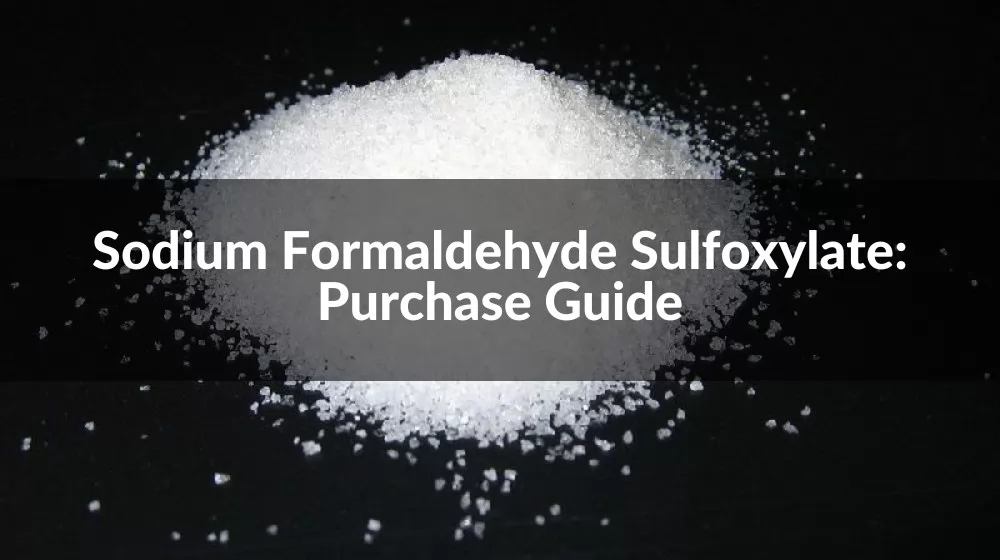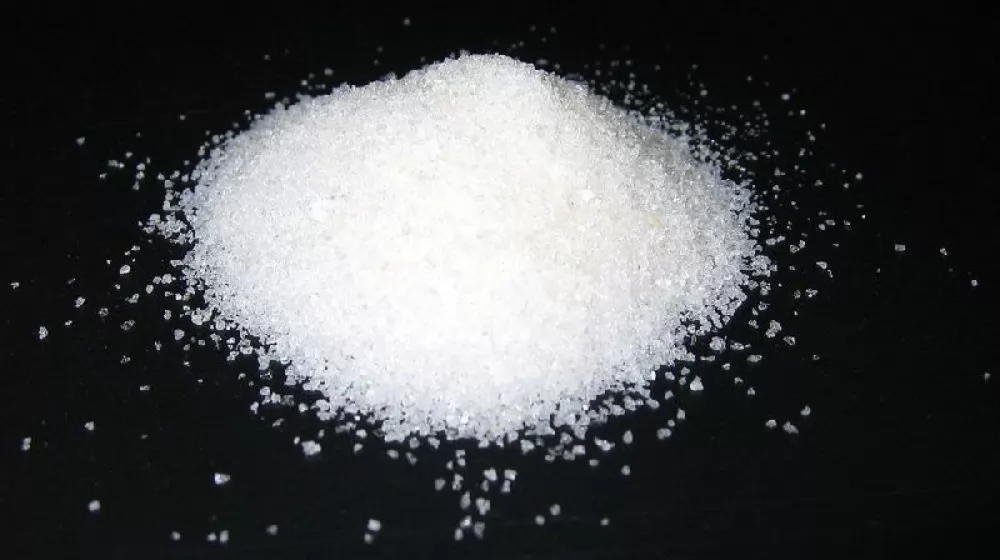

Welcome to a journey of discovery into the versatile world of Sodium Formaldehyde Sulfoxylate (SFS). As a crucial component in various industrial processes, understanding the intricacies of SFS is paramount for businesses seeking efficiency and excellence in their operations. In this comprehensive guide, we will navigate through its chemical composition, delve into its diverse industrial applications, explore the different types available, and guide you in making informed decisions when selecting a supplier.
Sodium Formaldehyde Sulfoxylate, often referred to as SFS, is a chemical compound with a fascinating array of applications. In this section, we will delve into its chemical composition, production process, and key properties, offering a comprehensive overview of this versatile substance.
The chemical composition of Sodium Formaldehyde Sulfoxylate plays a pivotal role in its unique characteristics. Comprising sodium bisulfite and formaldehyde, SFS boasts a well-defined structure that contributes to its efficacy in various industrial processes. The interaction between these components forms the basis of SFS's utility, making it a crucial element in numerous applications.
The production process of Sodium Formaldehyde Sulfoxylate involves a meticulous series of steps to ensure the highest quality and purity. Generally synthesized through the reaction of sodium bisulfite with formaldehyde, this process demands precision and expertise. The controlled conditions under which SFS is produced influence its final properties, making it imperative for manufacturers to adhere to strict guidelines during the production phase.
Understanding the key properties of Sodium Formaldehyde Sulfoxylate is essential for grasping its diverse applications. SFS exhibits excellent reducing properties, making it a sought-after agent in industries such as textile, photography, and water treatment. Its solubility, stability, and reactivity further contribute to its widespread use. Manufacturers and users alike value these properties as they directly impact the efficiency and reliability of processes where SFS is employed.
Having gained insight into the fundamental aspects of Sodium Formaldehyde Sulfoxylate, let's now explore its wide array of industrial applications. From enhancing processes in the textile industry to playing a crucial role in photography, the versatility of SFS makes it an indispensable component in various sectors.
The textile industry relies heavily on Sodium Formaldehyde Sulfoxylate for its exceptional reducing properties. In textile processing, SFS acts as a powerful reducing agent, facilitating the removal of excess dyes and enhancing color fastness. Its efficiency in ensuring uniform coloration and improving the overall quality of textiles has made it a staple in the fabric dyeing and finishing processes.
In the paper and pulp industry, Sodium Formaldehyde Sulfoxylate finds application as a bleaching agent. Its reducing capabilities contribute to the removal of impurities and color from pulp, resulting in high-quality paper production. SFS's role in this sector underscores its significance in achieving the desired paper characteristics, such as brightness and purity.
Sodium Formaldehyde Sulfoxylate has a storied history in the photography industry. Widely used as a photographic fixing agent, SFS aids in the development process by reducing and fixing photographic emulsions. Its reliability in stabilizing images and ensuring the longevity of photographs has cemented its status as a key component in photographic solutions.
Beyond the textile, paper, and photography industries, Sodium Formaldehyde Sulfoxylate finds application in a myriad of other sectors. Its reducing and stabilizing properties make it valuable in water treatment, chemical manufacturing, and even as a polymerization inhibitor. The versatility of SFS continues to drive innovation across various fields, solidifying its position as a multifaceted solution in industrial processes.
As we continue our exploration of Sodium Formaldehyde Sulfoxylate, it's essential to understand the various types and formulations that cater to specific industrial needs. The diversity in grades and specialized forms showcases the adaptability of SFS to meet the unique requirements of different industries.
Sodium Formaldehyde Sulfoxylate is available in different grades and variants, each tailored to specific applications and industries. Commonly classified based on purity and concentration, these grades ensure that manufacturers can choose the most suitable form of SFS for their processes. High-purity grades are often preferred in industries where precision and consistency are paramount, while more diluted variants find use in applications where a milder reducing effect is desired.
Recognizing the unique demands of various industries, specialized forms of Sodium Formaldehyde Sulfoxylate have been developed. For instance, the textile industry may require a specific formulation with enhanced reducing power, while the paper and pulp sector might benefit from a variant optimized for bleaching efficiency. The photography industry, with its distinct needs, may favor a specialized form that ensures precise fixing and stabilization during the development process. These tailored solutions underscore the versatility of SFS, providing targeted performance in diverse industrial settings.

When considering the procurement of Sodium Formaldehyde Sulfoxylate, several factors come into play, influencing the decision-making process for businesses. Understanding these factors is crucial for ensuring a reliable and effective supply of SFS for diverse industrial applications.
Quality standards serve as a cornerstone in the purchase of Sodium Formaldehyde Sulfoxylate. Manufacturers must adhere to stringent quality benchmarks to guarantee the purity, consistency, and effectiveness of the SFS they offer. The adherence to industry-recognized standards not only ensures the reliability of the product but also plays a pivotal role in maintaining the integrity of downstream processes. Buyers should actively seek suppliers who prioritize and certify their Sodium Formaldehyde Sulfoxylate according to established quality standards.
The reputation of a supplier is a key determinant in the purchase decision for Sodium Formaldehyde Sulfoxylate. Established and reputable suppliers are more likely to provide consistent, high-quality products. Customer reviews, industry feedback, and a supplier's track record should be thoroughly evaluated. A reliable supplier not only delivers on the promised product specifications but also ensures timely delivery, customer support, and flexibility to meet varying business needs. Building a partnership with a trusted supplier is instrumental in securing a reliable source of SFS for long-term industrial operations.
Regulatory compliance is a non-negotiable aspect of Sodium Formaldehyde Sulfoxylate purchase. Suppliers must adhere to local and international regulations governing the production, transportation, and handling of SFS. Buyers should prioritize suppliers who transparently demonstrate their commitment to regulatory compliance, providing necessary certifications and documentation. Ensuring that the Sodium Formaldehyde Sulfoxylate meets all safety and environmental standards is not only a legal requirement but also safeguards the reputation and ethical standing of businesses involved in the supply chain.
As you embark on your Sodium Formaldehyde Sulfoxylate journey, make the choice for excellence. HighMountain Chem stands as a beacon in the industry, offering unparalleled expertise and high-quality products. With a commitment to strict quality standards, regulatory compliance, and a track record of satisfied customers, HighMountain Chem is your trusted partner in ensuring the success of your industrial processes. Explore the possibilities with China's leading Sodium Formaldehyde Sulfoxylate manufacturer.
Ready to elevate your processes? Visit HighMountain Chem's website to discover how our premium Sodium Formaldehyde Sulfoxylate solutions can empower your business.









